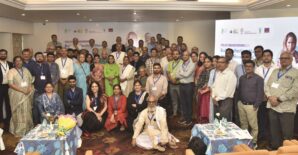Boycotting China: More symbolic than punitive — start designing policies which support Atmanirbhar Bharat
In the wake of the recent Indo-China conflict in the Galwan Valley, a section of Indians are clamouring for a boycott of Chinese products and promotion of domestic manufacturing. This emotional outrage is justified. With Indo-China relations becoming acrimonious due to the worst conflict at the border in the last 60 years, Indian consumers are hoping to hit China economically. Indo-China economic and trade relations are unlikely to become normal in the coming months, especially if border tensions get aggravated. Prime minister Narendra Modi’s “Atmanirbhar Bharat” vision and the “vocal for local” call looks set to promote Indian manufacturers, and this can also affect India-China economic relations.
Reduce Chinese imports and FDI
It must be noted that the trade deficit between India and China has been gradually declining, partially because of the reduction in India’s imports from China. One of the most significant products that has seen a reduction in imports is cellular phones. Last year, India imported 33% less cellular phones from China on a year-on-year basis. In 2019, India imported products from China worth approximately $68.2 billion and exported merchandise worth approximately $17 billion.
India’s imports from China is only 2.7% of their total global exports, which is around $2.5 trillion. It is next to impossible to generate substitutes to Chinese imports in a short span of time. The Indian government will have to provide both trade protection and time to our domestic manufacturing sectorfor it to establish itself in terms of competitiveness and quality; much as we may want it, changes to import-export volumes can’t happen overnight.
We need to understand the structure of Indian imports from China. There are many products imported from China which can be categorised as high value-added, technologically-oriented, labour-intensive or inelastic products. Currently, around 40% of India’s imports are high value-added products like electronic items and medical instruments. The rest are either low-technological, labour-oriented or inelastic products like active pharmaceutical ingredients (APIs), fertilisers, chemicals or toys. In the coming five years, India is capable of substituting at least one-third of its current imports, mainly electronics such as smartphones, televisions, auto components, solar photovoltaic cells and telecom equipment, by aggressively creating a manufacturing base in India. It is not pragmatic to steer clear of current imports from China as domestic stakeholders will need time to build competitiveness. But, there will definitely be a reduction in imports of Chinese products in a couple of years.
Furthermore, China has been one of the important sources of foreign direct investment (FDI) flowing into India. According to the ministry of commerce and industry, FDI from China stood at a total of $1.8 billion between 2015 and 2019. Automobiles, electrical equipment, book printing, services, and electronics were the top-five sectors attracting investment from China. The payments and fintech app Paytm, e-grocer Bigbasket, education app Byju’s, ride-hailing platform Ola, and hotel aggregator platform Oyo have received substantial funds from Chinese investors as the latter have rapidly increased their footprint in the start-up space. It is difficult to ignore the fact that Chinese investment generates employment in India, and matching these investments locally will take a fair amount of time. Thinking practically, it will be extremely daunting for India to ignore Chinese investments. What we need to focus on is to how to make Indian start-ups profitable. Most Indian unicorns and start-ups are not profitable. Around 10 unicorns each made losses to the tune of Rs 2,000 crore ($266 million) to Rs 6,000 crore ($800 million) in FY19.
Conglomerates and competitiveness
A conglomerate amalgamates several different types of business operations that may or may not seem related. Conglomerate corporations may produce military engines for jet fighter planes in one business segment and run a chain of supermarkets in another. Even within a single market, such as entertainment, a conglomerate may operate diversified businesses, from movie production to clothing manufacture. The positive role of giant conglomerates in economic growth has remained unchanged as they influence manufacturing cost, technological advancement, internationalisation of products and state policies. The existence of conglomerates at different geographical locations during different time periods is an outcome of achieving superios technological progress and high market share. For example, during the 1950s and 60s, most of the conglomerates were in developed regions like the European Union and the United States. But, after reaching saturation in terms of price, technical innovation and physical presence, these conglomerates were in search of new geographical locations and markets. Then in the 1970s and 80s, conglomerates marked their presence in East Asian countries, followed by China and Hong Kong in the 1990s and 2000s. Increasingly, there is a shift towards South-East Asian countries like the Philippines and Thailand as China and Hong Kong are inching towards their saturation point. India too is expected to experience a similar impact of conglomerates, mainly in manufacturing and mass assembly line production, like China experienced 30 years before.
Now, the simple question to ask is: What did China gain by becoming a manufacturing hub over the past 30 years, and is it pragmatic for India to replicate this swiftly, in the same manner? Most economists argue that India has already missed the bus to make a robust manufacturing sector, and time is running out as technology is moving towards machine learning, artificial intelligence and robotics. The answer cannot be a simple yes or no. A dependable path is to start designing policies that support “vocal for local” and “Atmanirbhar Bharat”, and invest sufficient amount of time to be on a par with China in terms of benefits due to economies of scale.
Anjani Kumar is a Senior Research Fellow at International Food Policy Research Institute (IFPRI), South Asia and Abhishek K Jha is a PhD Scholar at Jawaharlal Nehru University. Views expressed are personal.This article was originally published in Financial Express.
Odisha’s Deputy Chief Ministers Inaugurate Gender Responsive Cell to Strengthen Inclusive Agricultural Governance: A pioneering unit within the DAFE, developed
The IFPRI-AERA session on “Transforming Agri-Value Chains: Emerging Frontiers for Agribusiness” held on 3 December at the Indian Council of Agricultural
24 September 2025, New York: The SAARC (South Asian Association for Regional Cooperation) Agriculture Centre (SAC), Dhaka, and the International



